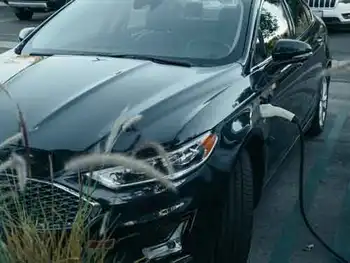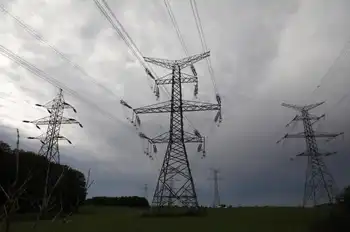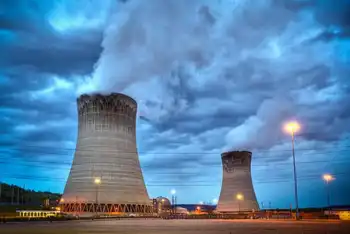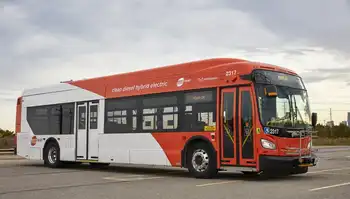Szott builds ZOT as a labour of love
By Globe and Mail
High Voltage Maintenance Training Online
Our customized live online or in‑person group training can be delivered to your staff at your location.

- Live Online
- 12 hours Instructor-led
- Group Training Available
Szott built go-karts in high school, his own racing motorcycle in university, has raced Formula Ford and F2000 open-wheelers and has a passion for Lotuses — he owns three, including a Europa and an Esprit. They currently share garage space with an unusual project completed last year after his interests were diverted down an unexpected, but not previously unexplored, side road.
The result was a wooden-bodied, horseless-carriage style, gasoline/electric hybrid with weed-whacker engine and Amish buggy-spring suspension.
Its creation was sparked by an interest in hybrids dating back to Szott's university days, but he also isn't the first in the family to take an interest in alternative automotive power sources.
His father, John, escaped the Nazi invasion of Poland and came to Canada in the early 1940s, where, according to a 1943 Toronto newspaper article, he built a gasoline-rationing beater fuelled by gas created from charcoal. The 28-year-old had added a charcoal cooking furnace to the back end of his 1929 model automobile and fed the gas generated to the engine via a modified carburetor. He claimed it cost him just 86 cents to cover 110 miles in the vehicle.
The car was scrapped before Jan Szott was born in 1947, but he grew up hearing about it, of course, and learning a thing or two from his father, an aircraft mechanic who worked on the Avro Arrow project before moving to General Motors.
Jan's own early bent for things mechanical was revealed when, as an eighth grader, he built his first go-kart. He powered it with an engine borrowed from the family lawn mower. His mechanical skills and ambitions had obviously increased by the time he reached the University of Toronto in the late 1960s.
While studying electrical engineering, he and a pal built a racing motorcycle from scratch, designing and welding the frame and machining virtually all the bits themselves to build its 100-cc, water-cooled, two-stroke motor. In semi-clandestine testing at the old Harewood racing circuit near Hamilton, it proved fast. It revved to 22,000 rpm, and 20 hp was seen in a dynamometer test — but was too fragile.
Those stories about dad's wartime gas burner were likely the inspiration for the thesis on hybrid automobiles he wrote while at U of T. It was brought back to mind a few years ago by the buzz being generated about hybrids and electrics at General Motors of Canada Ltd., where he's currently national desktop computer manager.
"I thought it might be fun to build something along that line," Szott says, and as a starting point he dug out the set of plans acquired years before to build a replica horseless carriage. "They're usually powered by a ride-on lawnmower drivetrain, but I thought it would be even more fun to build a hybrid."
The design, creation of detailed drawings and acquisition of the necessary bits and pieces took six months or so, but actual construction just three. The first test drive took place in 2006.
The little car looks not unlike a more angular version of Ransom E. Olds' curved-dash Oldsmobile of 1901. It is built on a steel frame and has a wheelbase of 1,447 mm, a track of 1,219 mm and weighs 145 kg. Solid axles front and rear are fitted with 23-inch-tall wire wheels and three-inch tires.
Steering is by tiller and the red oak body is suspended on elliptical springs sourced from American Amish buggy builders who use them to suspend their vehicle's seats. There's nothing old-fashioned about the bicycle-derived disc brakes, however. Final touches were a pair of busty and bewinged dash ornaments and a large brass bulb horn.
As initially built, the "ZOT" was a pure electric car, powered by two, small, 24-volt electric motors, producing a total of 1.3 hp, which is transmitted to the rear axle via chains. "But in the back of my mind I was already working out how I'd do the hybrid part of the design," Szott says.
He came up with a system that employed an automotive alternator rejigged to deliver a 24-volt outlet and coupled to the small four-stroke engine from a weed-trimmer. This is fired up to charge the pair of 12-volt, deep-cycle, lead acid batteries wired in series to produce the 24 volts the motors require.
The system also charges the batteries with regenerative braking — the motors turn into generators when the vehicle is coasting. That makes it "a true hybrid," Szott says.
He says acceleration is brisk enough — the motors can actually produce peak power of more than eight horsepower for brief periods. With one person aboard, it can cruise at about 30 km/h for three hours on battery power alone. And with the motor recharging the battery, the range would be considerably more.
The drive system of Szott's car isn't dissimilar to that used on electric vehicles a century ago, and neither is its hybrid system.
The first pure-electric vehicles appeared in North America in the mid-1890s, and in 1899-1900, electrics outsold gas and steam-powered vehicles. They were followed by the first hybrids, which used gasoline engines to generate electricity to recharge their batteries. The Galt Gas Electric car, built by a pair of tinkerers based in Galt, Ont., in 1914 was an early example. But both electric and hybrid vehicles had fallen out of favour by the 1920s, as gasoline began its century-long domination of land transportation.
Szott built the ZOT "just for fun" and it's not street legal. But he has demonstrated it at GM's headquarters and taken it to various shows and cruise nights where "it always attracts a lot of attention."











